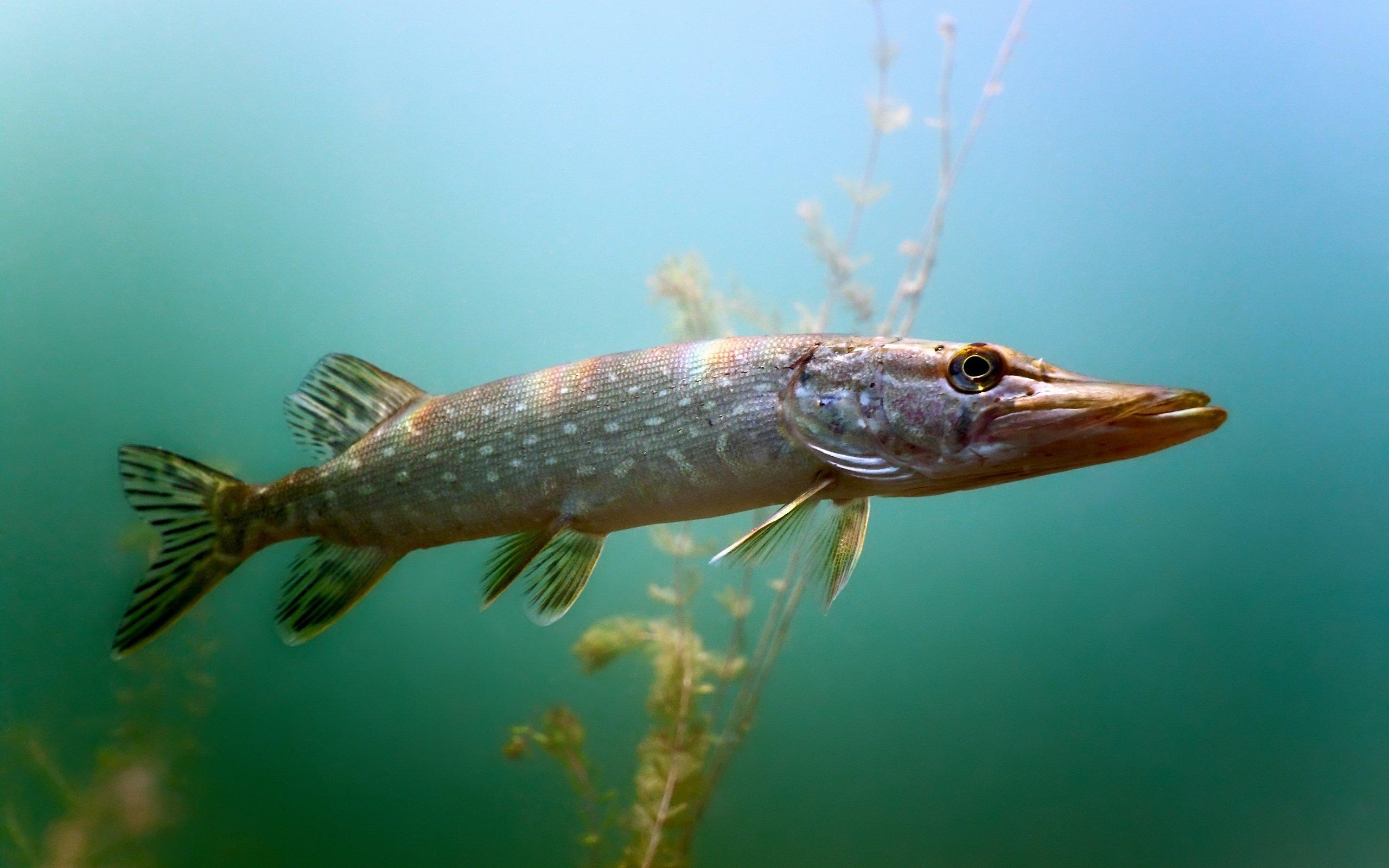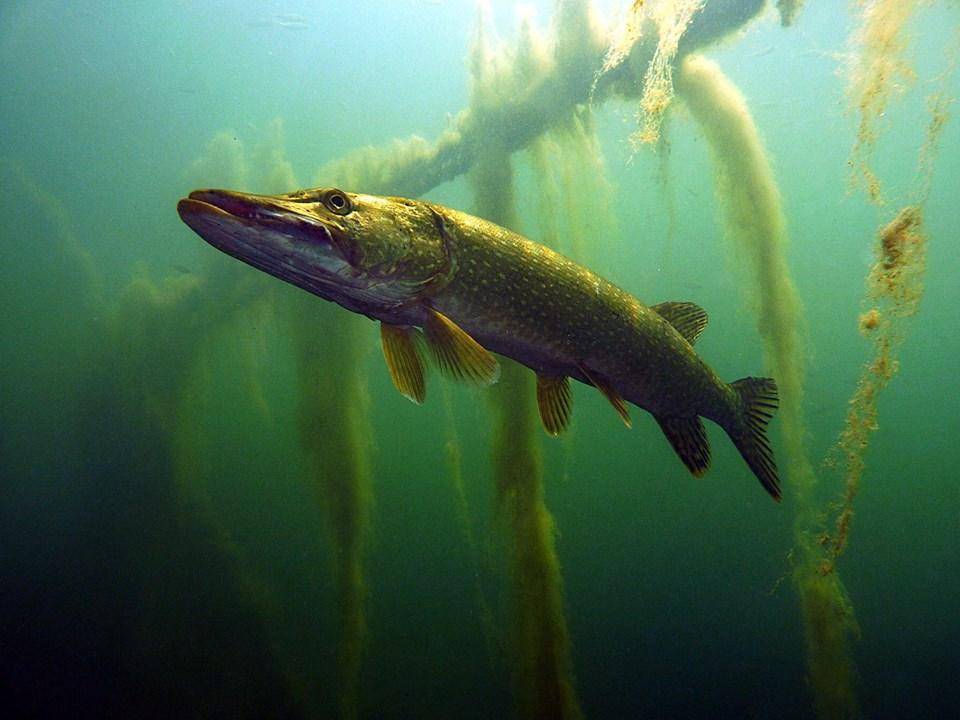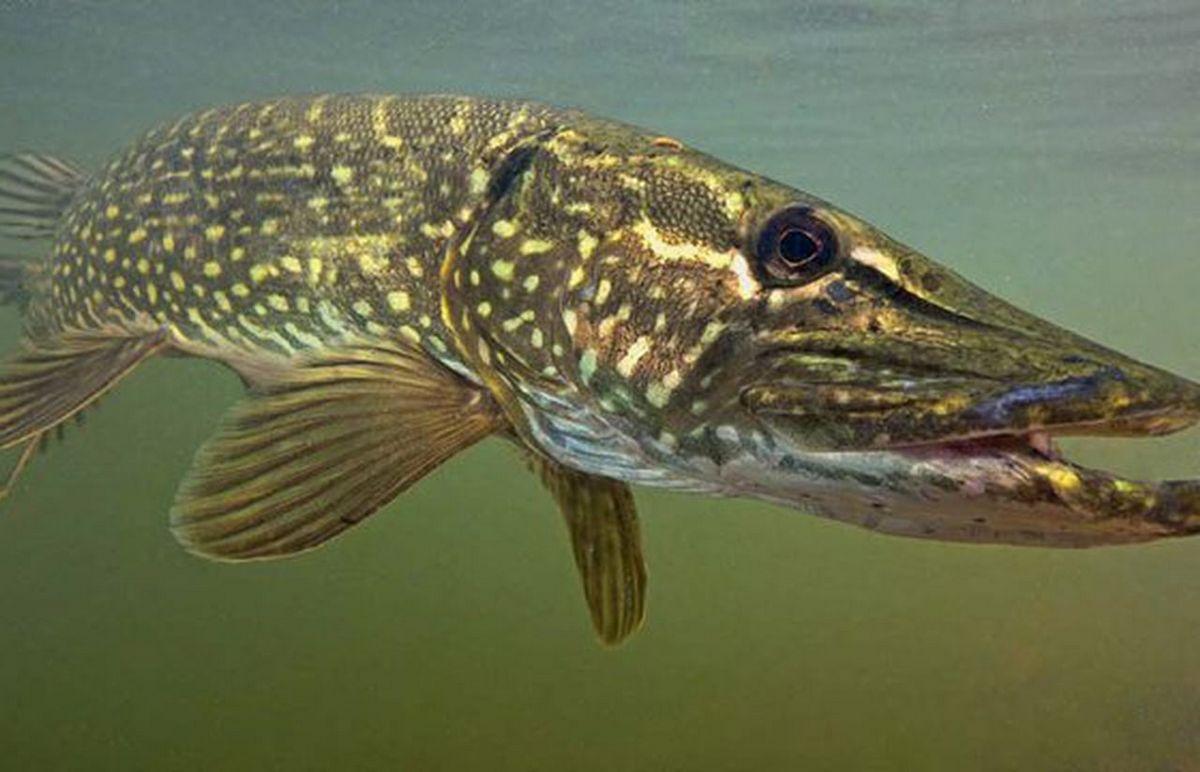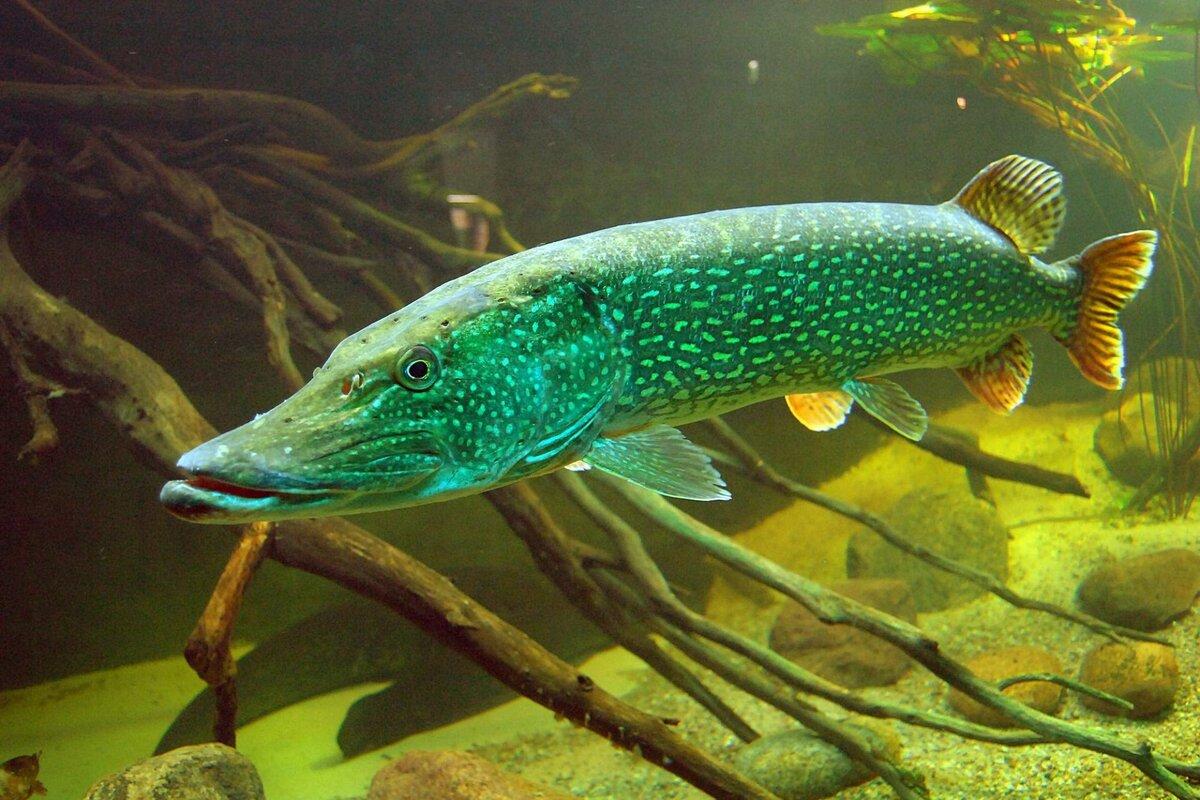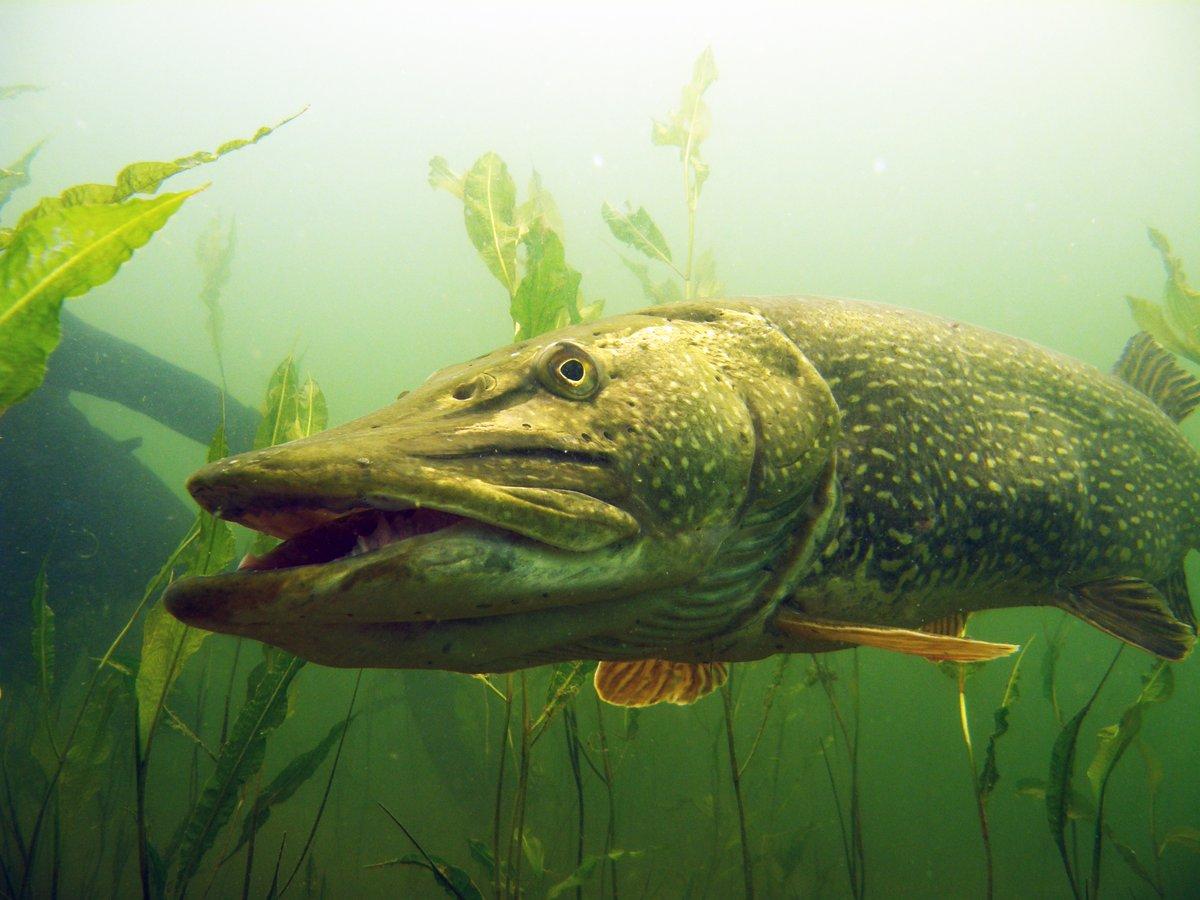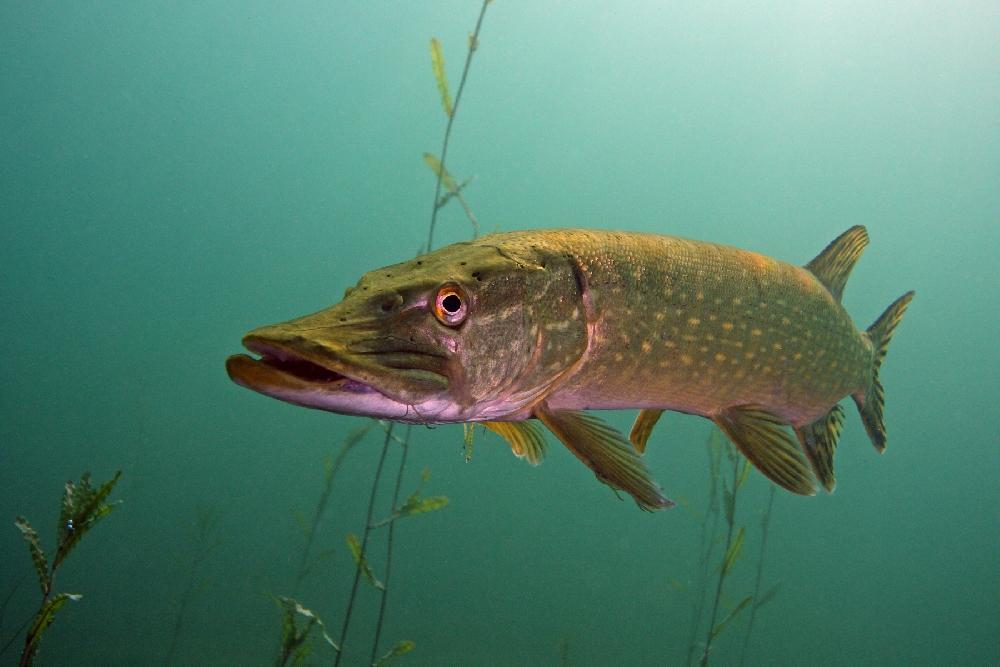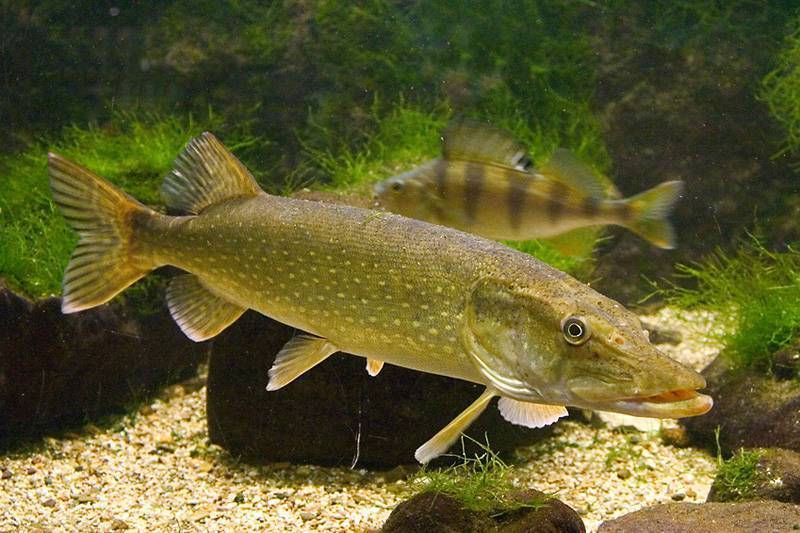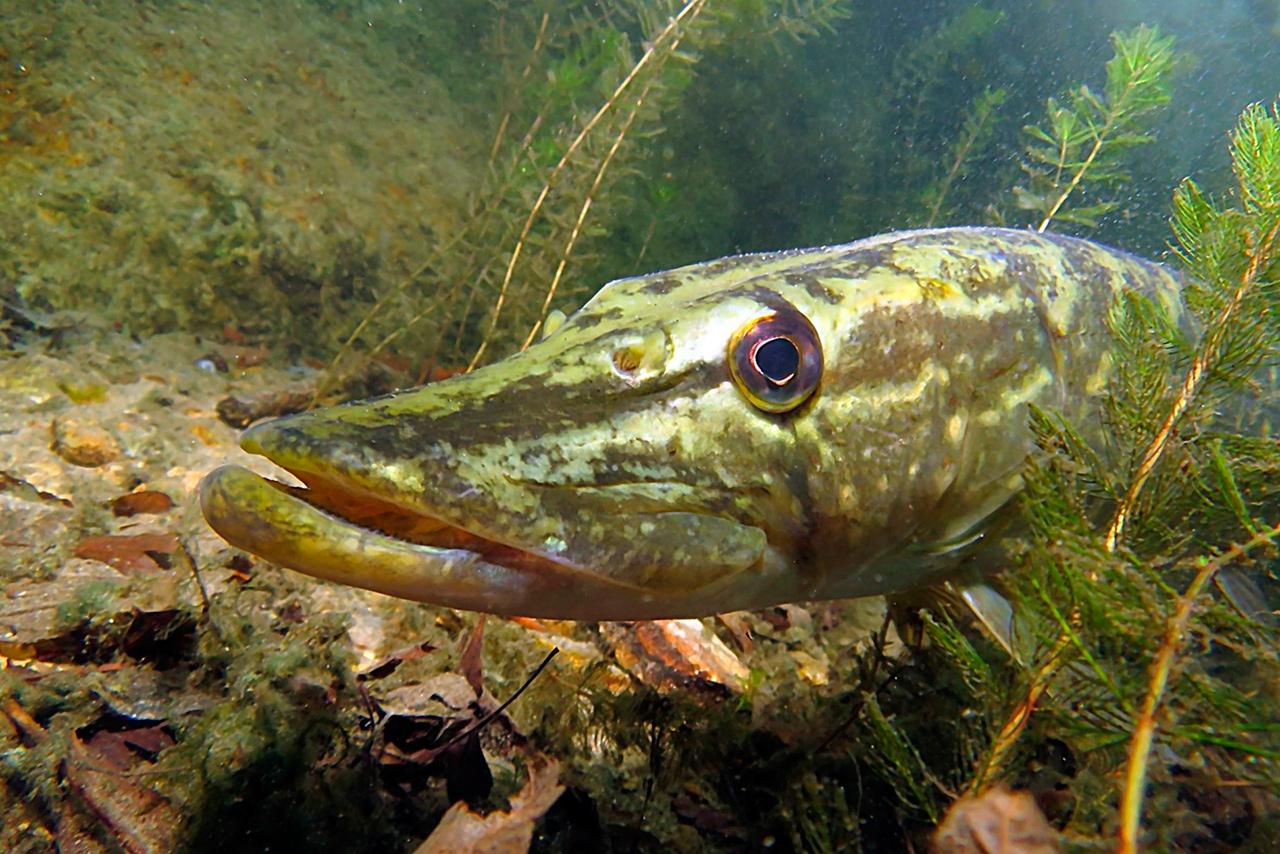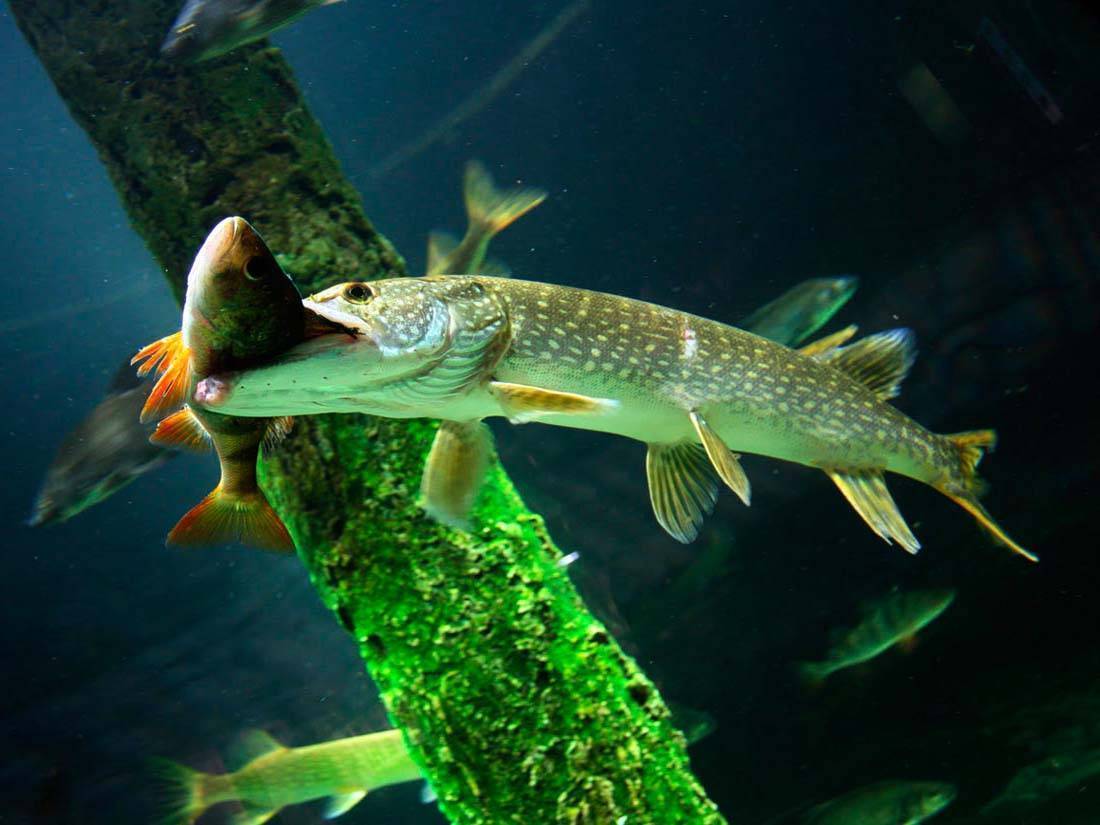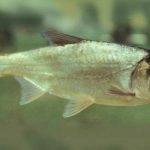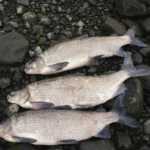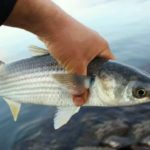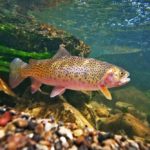There are many fairy tales, legends and stories about the wisdom of the common pike. Human curiosity about this mistress of the rivers has led to the discovery of a huge number of intriguing facts regarding this predatory fish. Pike is well known among freshwater predators in Russia. This species is found throughout the northern hemisphere. Pike are ruthless and cunning hunters who hide along the banks of rivers and lakes, waiting for their prey.
Description
Pike are widely known as the most ferocious predator in the country's waters. It mainly lives in shelters, waiting for prey in ambush at close range. The largest size of common pike ever caught was 145 cm in length and weighed 35-40 kg. However, the average body length is only 0.90 m, and the weight is 8.5 kg. According to scientific research, life expectancy does not exceed 31-35 years. In the US, researchers found that no pike over 24 years of age were caught by fishermen; however, this does not necessarily mean that American specimens do not live long. Most likely, they were simply able to avoid getting hooked.
No pike over 17 years of age were found in Sweden or Finland, while Russian ichthyologists reported that most of those caught were 22 years of age or younger, although popular rumor ascribes a completely different lifespan to the fish.
Origin story
Pike, a species of ray-finned fish, have existed since the Silurian period (420 million years ago). During this time, the species went through changes in size and adapted to life in both large and small bodies of fresh water throughout the northern hemisphere. This family includes seven different species, which are divided into two groups: five found in North America and two located in Russia and Europe. We will talk about the common pike (Esox lucius), which is more popular than other species and is also eaten.
Habitat
Pike can be found in freshwater environments throughout North America and Eurasia. It tends to remain in still or slow-moving waters, along shorelines and in dense vegetation.In lakes, rivers and ponds, it usually swims close to the shore and stays in shallow water with a lot of algae. It is also found in rivers further from the shore.
The species is quite tolerant of acidic water conditions, so it is often seen even in swamps. However, fish usually avoid fast-flowing rivers or rocky rivers. Vegetation is essential for fish habitat, so when living in the north, they often hide behind rocks, under bushes or snags.
In addition to living in inland waters, this species is found in coastal areas of the Baltic Sea, such as the Riga, Curonian, Finnish Gulfs and the Taganrog Gulf of the Sea of Azov.
It is very sensitive to both salinity levels and oxygen concentrations; if the oxygen level drops below 2.0 mg/l, respiratory arrest will occur, leading to death. In Russia, it can be found almost everywhere where there is any small fish that it can feed on - juvenile pike prefer shallow water areas near cattail thickets, while large adult individuals settle in holes located at great depths in reservoirs.
Pike food
For most of the year, these predators feed twice a day - in the mornings and evenings. During daylight hours they remain mostly inactive on the river bottom. However, during the spawning period (March-June and autumn), they become especially voracious and feed almost constantly in order to accumulate strength for mating or wintering.
The main source of food for pike is small live fish, such as crucian carp, ruffe, gobies, minnows, perches, chubs, minnows, silver breams and juvenile pike.These predators are usually solitary creatures that pair up only when it is time to spawn. This explains why they have no qualms about gobbling up small or slow-moving members of their own species.
Experienced fishermen say that pike sometimes hunt rodents that have fallen into the water or waterfowl; however, their main diet remains small fish, making them useful in small ponds where overpopulation may be a problem, as they help maintain balance by keeping numbers in check.
Pike fry usually feed on microorganisms in the water, but as they mature they switch to eating the juveniles of other small fish.
Pike are usually wary of unfamiliar fish. Pike have been observed to experience gorging several times throughout the year - before the start of the breeding season, after spawning in May-July and September-October - however these dates may vary depending on weather conditions.
What does a fish look like?
The pike is easily recognized by its long and almost cylindrical body, as well as single fins that extend all the way to the caudal fin, allowing it to swim at impressive speed. In addition, its body has a streamlined or rounded outline, which further improves its hydrodynamic capabilities. The scales fit tightly together, providing strong armor that protects against other pikes or predators with sharp teeth.
Pike have a flattened, wedge-shaped snout, which allows it to judge the speed of its prey and how far away it is. This skull structure also allows her to see what is in front of her, as well as from the sides and below.However, due to the wide open mouth, the view of what is underneath is greatly reduced, which encourages anglers not to put the bait too close to the bottom.
The fish also has exceptional hearing, which allows it to detect even minor changes in the water over a long distance. The snout is wide and long, providing a good area for capturing prey, and the gill membranes are divided, making it easier to open the mouth when trying to catch large fish. Inside the mouth there are many sharp teeth, among which canines of different sizes can be found. How many of them exactly depends on the age of the fish. In addition, there are bristles on the tongue and roof of the mouth that resemble the bristles of a toothbrush.
Coloring
The coloring of the pike helps it hide in bodies of water thanks to light transverse stripes and spots that form a camouflage pattern over most of the body, excluding the belly area - this is especially useful when there are a lot of plants and snags nearby.
It is difficult to determine exactly which colors are considered a background color and which colors make up the design. The shade of color may vary depending on the age of the fish, its habitat, diet and other elements. Young fish will have a light coloration, while older fish will have a darker color.
The most common colors found among many fish species are a grey-green base with olive stripes or spots. They usually have a dark back, pale yellow or gray-white undersides with gray speckles, and their fins usually show light stripes and speckles on a gray background.
The pattern of spots on the pike's scales allows it to blend in with its environment, since the location of the spots is unique for each of them and remains unchanged throughout its life.But if they move to a different area, their scales quickly change color to match that environment. This adaptive ability to camouflage is something that not even a chameleon is capable of.
Pike organs
This predator's eyes are medium in size and located on the top of its head, allowing it to observe its surroundings without having to move its body. Like other active predators, it uses these eyes to detect prey and effectively capture it.
The sense of smell and taste are highly developed: it can distinguish between bitter, sweet, sour and salty tastes. Using their sense of smell, fish detect other individuals of their species that are ready to spawn, as well as prey that is hidden in underwater plant life.
The fish's mouth is wide - it takes up half of its head - with a protruding lower jaw, which allows it to open wide and grab whatever it hunts.
How often do teeth change?
Pike teeth on the lower jaw are partially hidden under the mucous membrane and come in different sizes. A row of teeth located in the throat area can rise up and securely fix the prey, making it impossible for it to escape.
Pike have a special way of arranging their teeth, so-called family groups: along with regular teeth, they also have replaceable ones. If the main tooth breaks or falls out, a spare tooth takes its place, gradually becoming stronger and reaching its full size.
The process of changing teeth in pike is uneven; both young and old teeth can be present in its mouth at the same time. If for some reason a pike has lost more of its old teeth than usual, it will no longer be able to hunt large fish, since it will have nothing to hold it in place until new ones grow.This also applies to bait fishing - without sharp enough teeth to catch the prey, it won’t be able to do anything either.
The pike does not actually chew its prey, but rather uses its teeth to capture it. This makes the fish's teeth a formidable weapon, as they can cause harm to beginners who are not familiar with how to properly handle the fish. Some people believe that pike are able to replace old or damaged teeth during the full moon after spawning. However, such a change of teeth is not periodic, but occurs constantly. At the same time, the pike feeds on prey even when it replaces old teeth with new ones, just not as actively. However, it begins to be caught less readily.
Varieties
Let's look at seven species of pike that inhabit our globe. What species a fish belongs to determines the characteristics of its appearance, habitats and behavior.
Ordinary
This predator is a typical representative of its genus, which is found in many freshwater habitats throughout Eurasia on the North American continent. There is a lot of it in Russia too. It often reaches up to 170 cm in length and weighs on average about 6-8 kilograms. The coloration of this species varies depending on the environment in which it lives, from grayish-green to brownish or grayish-yellowish. As a rule, it prefers shallow water bodies with dense vegetation near the shoreline.
American
The redfin pike subspecies is seen only in eastern North America and can be divided into two subspecies: northern and southern. Moreover, the second lives in rivers flowing into the Atlantic Ocean. Both species of American pike do not grow to large sizes; they grow up to 0.35-0.40 m in length and weigh up to one kilogram. They can be distinguished by their shortened snout.The southern variety does not have red fins like its northern counterpart. The lifespan of this species does not exceed the age of 10 years.
Muskinong
The largest species of pike is considered a rare species. Native Americans gave it the name maashkinuzhe, which translates to “ugly pike.” It has also earned the nickname "giant pike" due to its large size - some specimens can weigh up to 30 kilograms and be up to 1.9 meters in length. Its body is usually silver, green or brown in color and has spots or vertical stripes on its back.
Amurskaya
The Amur pike has an attractive coloration: small silvery or golden-greenish scales and numerous black and brown spots cover its body from head to tail. They can reach a length of 1.20 meters and weigh up to 18 kilograms. This species is found on Sakhalin Island and in the Amur River, and its lifespan is 13-16 years.
South
It was previously believed that the southern pike was just a close relative of the common pike. It was first identified in 2011 and lives in rivers in Central and Northern Italy. Body parameters are average, life expectancy also does not differ from those of other species.
Black
Black pike, a North American predator, live in lakes and heavily vegetated rivers stretching from the southern border of Canada to Florida in the United States and all the way to the Great Lakes and Mississippi Valleys. It can grow up to 58 cm in length and weigh 2.3 kg. This species is similar in appearance to its popular cousin, but has a distinctive mosaic pattern along the sides as well as a dark stripe over the eyes.
Aquitaine
The Aquitaine pike, a species that was recently discovered in 2014, has its own habitat in France, where it can be found living in almost all bodies of water.
Pike spawning
Pike begin the process of laying eggs when the water reaches a temperature of 3-6 degrees Celsius, immediately after the ice melts, and can be found at a depth of 15 to 1 km depending on the habitat.
When they begin to spawn, they swim to shallow water and make loud splashing sounds. As a rule, males reach the age of sexual activity by 4 years, and females by 5. Small fish usually breed first, followed by larger specimens. When mating occurs, there can be 2-4 males with one female, or up to 8 males if we are talking about a large female pike.
During breeding, pike will rub against vegetation such as bushes and reed stalks, as well as other objects in the environment. They don't stay in one place for too long; instead, they move around their spawning grounds while they lay their eggs. If the water level drops sharply after spawning, this can result in large numbers of eggs dying due to lack of oxygen or nutrients needed to survive, which usually occurs during the spring drawdown (lowering) of water in reservoirs.
When their length reaches 0.2 cm, the fry are already quite independently obtaining food, for example, eating carp larvae. Since fish of the carp family, as a rule, spawn after pike, juvenile pike receive abundant food. Once they reach a size of 5 centimeters, they completely switch to eating the young of other fish.
In spring, fish live in floodplain lakes with rising water levels, however, when the connection between lakes and rivers is interrupted, their lifestyle becomes radically different from the lifestyle of their relatives living in rivers or large reservoirs. Lack of food leads to the fact that individuals of approximately the same age become two to two and a half times smaller than usual; this makes them vulnerable targets for large predators.
Features of hunting
The cunning pike uses its environment to ambush its prey. It hides behind underwater plants, rocks, logs and uneven bottoms of the pond before pouncing on its prey and catching it, leaving no chance of escape.
In cold weather, when there are fewer aquatic plants, the pike will hunt in the open, and sometimes its prey can escape or be noticed in time. It has been observed that some pike can pursue their prey over long distances without hiding much, which, according to scientists, is explained by the personal hunting habit developed by each individual fish. In rivers where the current is strong, pike can move fast enough that even agile fish have difficulty escaping from it. This predatory fish has the unique ability to jump out of the water, and also swallows its prey head first every time.
Natural enemies
It’s hard to agree with this, but even pikes with large teeth have opponents. In the Far East, Siberia and the Urals, river otters and eagles hunt them with pleasure. Large taimen also do not object to the consumption of medium-sized pike. In the southern regions, adult pike are pursued by catfish, and juveniles are pursued by pike perch, rotan and large perch.However, one of the most significant opponents of the pike remains man, from whom it has no escape.
How to fish for pike
Pike fishing is an exciting activity that involves the use of baits and techniques. When fishing for pike from the shore or from a pier, fishermen usually use spoons and spinning rods.
It is common knowledge among anglers that pike are solitary creatures, preferring bodies of water with little current and living in vegetation and holes. The fry of this species become active hunters early, reaching 0.40 m in length and 1000 grams in weight by the end of the first year of existence.
In large lakes, up to several dozen individuals can be caught in one season; the length of these specimens usually reaches one meter and their weight is about fifteen kilograms. Spring and autumn offer the best conditions for pike fishing; during the spawning period this does not give the desired results.
After laying eggs, the fish begin to hunt vigorously again in order to gain strength before the onset of winter - at this time they bite on almost everything that comes into view during daylight hours (they sleep at night). Shallows, as well as vegetation near the coastline, are ideal places for fishing; Particularly good results can be achieved on cloudy days when it is warm outside.
In autumn, when food becomes scarce, fish begin to store fat. Fishing at this time is not as intense, and pike can be found at depths where small fish hibernate. This makes fishing fun because the pike become heavier and fight vigorously against the fisherman. The meat of these fish is highly prized for its delicious taste.
In summer, the bite is unpredictable; Often it is hooked only on the lower lip, near the edge, so it can break off the fishing line.Early afternoon, before four o'clock in the afternoon, is considered a favorable time for fishing. During this period, predators move to areas full of water lilies and lotus plants due to the abundance of small fish and ducklings around them. In these places you can sometimes see huge pike weighing 10-15 kilograms swimming close to the shore. If you cast a lure with a wobbler correctly, you may be lucky enough to catch one of these large specimens.
Interesting Facts
The main benefit of eating its meat is that it is low in calories and contains no fat, making it a healthy eating option. Additionally, its meat contains natural antiseptics that boost the immune system and prevent bacteria-related illnesses, making it an ideal choice for flu prevention.
This fish is also an excellent source of phosphorus, potassium, B vitamins and other nutrients that can help reduce the likelihood of cardiac arrhythmias, as well as gastrointestinal problems, obesity and hypovitaminosis.
A remarkable story about pike is associated with Emperor Frederick II Barbarossa, who in 1230 caught a pike in Helboron slightly less than 3 meters long and weighing 70 kilograms. 267 years later, the same fish was recaptured from the same lake. She grew to 5.8 meters in length and 140 kilograms in weight. Unusually for its species, the fish appeared completely white due to its long lifespan. She was released back into the water, but was never seen again.
These fish have development potential and are able to absorb knowledge, which helps them search for larger prey. They eat ducks, muskrats and other small waterfowl.
Some fish, if they reach five meters in length, are known to attack large animals such as dogs, or even people (although such cases are rare).

